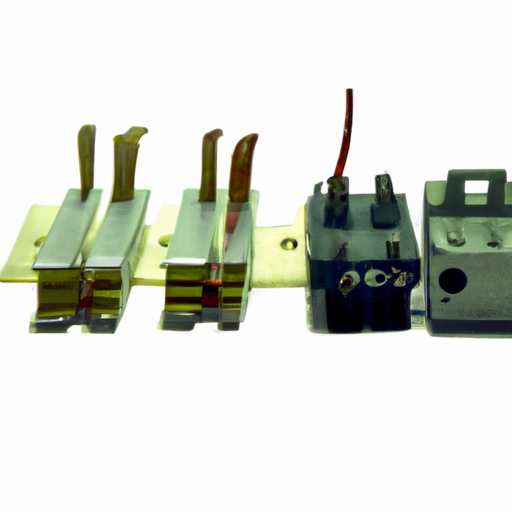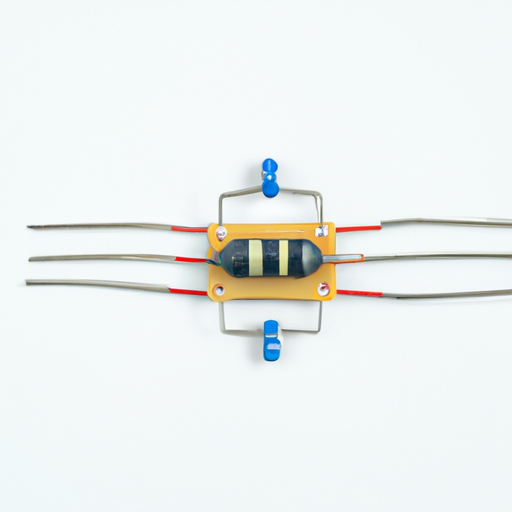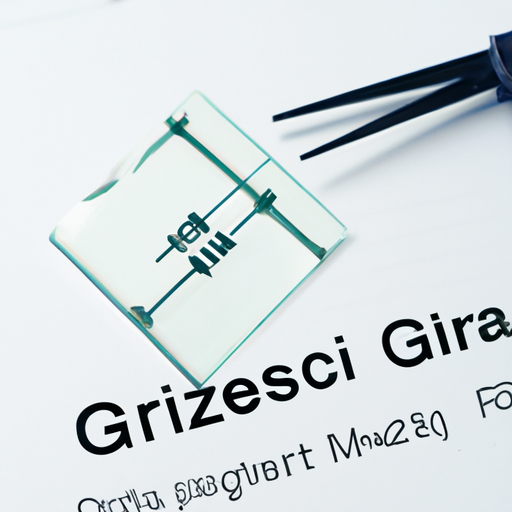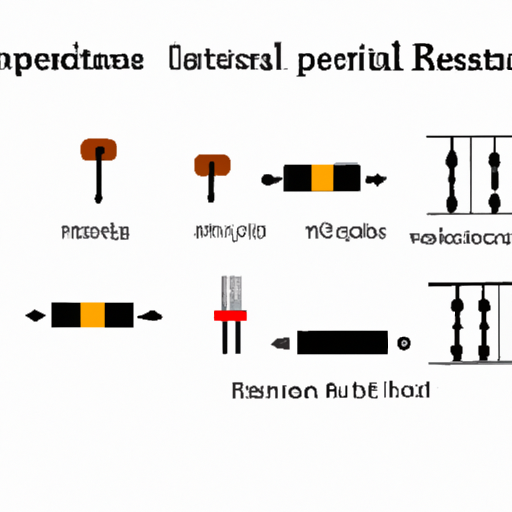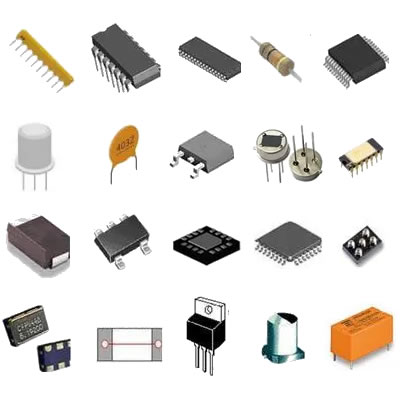What are the popular resistor standard product types?
What are the Popular Resistor Standard Product Types?
I. Introduction
A. Definition of Resistors
Resistors are passive electronic components that limit the flow of electric current in a circuit. They are essential for controlling voltage and current levels, ensuring that electronic devices operate safely and effectively. By providing resistance, they help to manage power distribution and signal integrity in various applications.
B. Importance of Resistors in Electronic Circuits
In electronic circuits, resistors play a crucial role in protecting sensitive components, dividing voltages, and setting bias points for transistors. They are found in virtually every electronic device, from simple household appliances to complex computer systems. Understanding the different types of resistors and their applications is vital for engineers and hobbyists alike.
C. Overview of the Article's Purpose
This article aims to explore the popular standard product types of resistors, detailing their characteristics, applications, and selection criteria. By the end, readers will have a comprehensive understanding of the various resistor types available and how to choose the right one for their specific needs.
II. Understanding Resistor Types
A. Classification of Resistors
Resistors can be broadly classified into two categories: fixed resistors and variable resistors.
1. Fixed Resistors
Fixed resistors have a predetermined resistance value that does not change. They are the most common type of resistor used in electronic circuits.
2. Variable Resistors
Variable resistors allow for adjustable resistance values, making them useful in applications where fine-tuning is necessary.
B. Key Parameters of Resistors
When selecting a resistor, several key parameters must be considered:
1. Resistance Value
Measured in ohms (Ω), the resistance value determines how much current will flow through the resistor at a given voltage.
2. Power Rating
The power rating, expressed in watts (W), indicates the maximum power the resistor can dissipate without overheating.
3. Tolerance
Tolerance refers to the allowable deviation from the specified resistance value, usually expressed as a percentage. A lower tolerance indicates a more precise resistor.
4. Temperature Coefficient
The temperature coefficient indicates how much the resistance value changes with temperature, which is crucial for applications in varying environmental conditions.
III. Popular Fixed Resistor Types
1. Characteristics
Carbon composition resistors are made from a mixture of carbon and a binding material. They are known for their high energy absorption and ability to withstand high voltage.
2. Applications
These resistors are commonly used in applications where high pulse power is required, such as in power amplifiers and audio equipment.
1. Characteristics
Carbon film resistors are made by depositing a thin layer of carbon on a ceramic substrate. They offer better stability and lower noise compared to carbon composition resistors.
2. Applications
They are widely used in consumer electronics, such as televisions and radios, due to their reliability and cost-effectiveness.
1. Characteristics
Metal film resistors are constructed using a thin metal film, providing excellent stability, low noise, and high precision.
2. Applications
These resistors are ideal for precision applications, such as in measurement devices and high-frequency circuits.
1. Characteristics
Wirewound resistors are made by winding a metal wire around a ceramic or fiberglass core. They can handle high power and are known for their durability.
2. Applications
Commonly used in power supplies and industrial applications, wirewound resistors are suitable for high-current applications.
1. Characteristics
Thick film resistors are made by printing a resistive paste onto a substrate. They are compact and can be produced in various shapes and sizes.
2. Applications
These resistors are often used in surface mount technology (SMT) applications, such as in smartphones and other compact devices.
1. Characteristics
Thin film resistors are similar to thick film resistors but are made with a thinner layer of resistive material, offering higher precision and stability.
2. Applications
They are used in high-precision applications, such as in medical devices and aerospace technology.
1. Characteristics
Surface mount resistors are designed for mounting directly onto the surface of printed circuit boards (PCBs). They are compact and suitable for automated assembly.
2. Applications
These resistors are prevalent in modern electronics, including computers, smartphones, and other compact devices.
IV. Popular Variable Resistor Types
1. Characteristics
Potentiometers are three-terminal devices that allow for adjustable resistance. They can be linear or logarithmic in their resistance change.
2. Applications
Commonly used in volume controls, tone controls, and other applications requiring variable resistance, potentiometers are essential in audio equipment and consumer electronics.
1. Characteristics
Rheostats are a type of variable resistor with two terminals, designed to handle higher currents. They are typically used for adjusting current flow.
2. Applications
Rheostats are often found in applications such as light dimmers and motor speed controls.
1. Characteristics
Trimmers are small variable resistors used for fine-tuning circuits. They are typically adjusted only once during the setup of a device.
2. Applications
Trimmers are commonly used in calibration circuits, such as in radio transmitters and receivers.
V. Specialty Resistor Types
1. Characteristics
Fusible resistors combine the functions of a resistor and a fuse. They are designed to open the circuit if the current exceeds a certain level.
2. Applications
These resistors are used in power supply circuits to protect against overcurrent conditions.
1. Characteristics
Photoresistors, or light-dependent resistors (LDRs), change their resistance based on the amount of light they are exposed to.
2. Applications
LDRs are commonly used in light-sensing applications, such as automatic streetlights and camera exposure controls.
1. Characteristics
Thermistors are temperature-sensitive resistors that exhibit a significant change in resistance with temperature variations.
2. Applications
They are widely used in temperature sensing and control applications, such as in thermostats and temperature monitoring systems.
1. Characteristics
Varistors are voltage-dependent resistors that change their resistance based on the applied voltage, providing protection against voltage spikes.
2. Applications
Varistors are commonly used in surge protection devices and voltage clamping applications.
VI. Resistor Selection Criteria
A. Application Requirements
When selecting a resistor, it is essential to consider the specific requirements of the application, including resistance value, power rating, and tolerance.
B. Environmental Considerations
Factors such as temperature, humidity, and exposure to chemicals can affect resistor performance. Choosing a resistor that can withstand the operating environment is crucial.
C. Cost vs. Performance Trade-offs
Balancing cost and performance is vital in resistor selection. While high-precision resistors may offer better performance, they can also be more expensive. Evaluating the trade-offs is essential for cost-effective design.
VII. Conclusion
A. Summary of Key Points
Resistors are fundamental components in electronic circuits, with various types available to suit different applications. Understanding the characteristics and applications of fixed, variable, and specialty resistors is crucial for effective circuit design.
B. The Future of Resistor Technology
As technology advances, the demand for smaller, more efficient resistors continues to grow. Innovations in materials and manufacturing processes are likely to lead to the development of new resistor types with enhanced performance.
C. Final Thoughts on Choosing the Right Resistor Type
Selecting the right resistor type involves understanding the specific needs of the application, considering environmental factors, and balancing cost and performance. By following these guidelines, engineers and hobbyists can make informed decisions that enhance the reliability and efficiency of their electronic designs.
VIII. References
A. Suggested Reading
- "The Art of Electronics" by Paul Horowitz and Winfield Hill
- "Electronic Components: A Complete Reference for Project Builders" by Mark J. Balch
B. Industry Standards and Guidelines
- IEC 60115: Fixed Resistors for Use in Electronic Equipment
- EIA-198: Standard for Fixed Resistors
C. Manufacturer Resources
- Vishay Intertechnology
- Yageo Corporation
- Bourns, Inc.
This comprehensive overview of popular resistor standard product types provides a solid foundation for understanding the various options available in the market. Whether you are designing a new circuit or troubleshooting an existing one, knowing the right resistor type can make all the difference.


